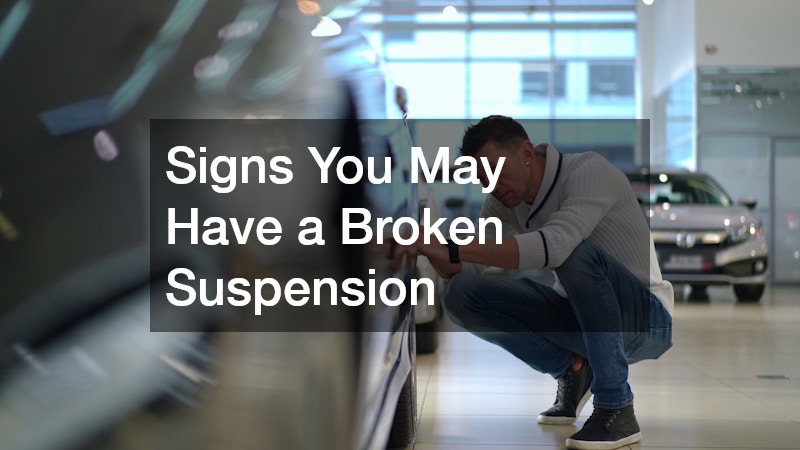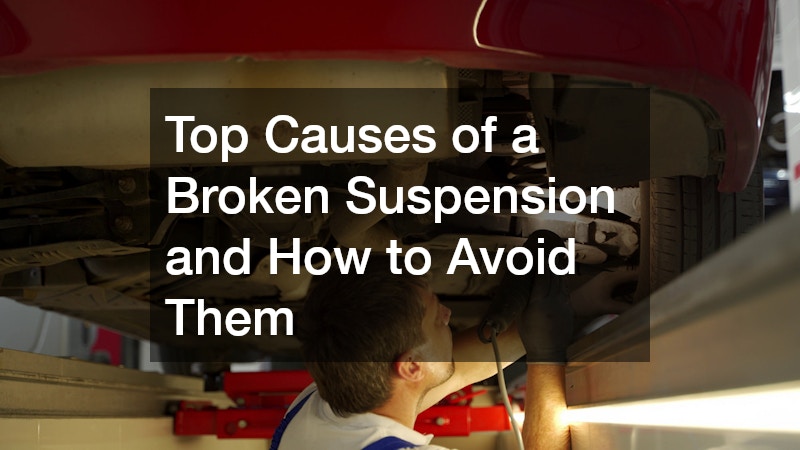A car’s suspension system is often overlooked until something goes wrong. Yet, it’s one of the most critical components for safety, comfort and handling. A broken suspension doesn’t just make your drive uncomfortable—it can lead to dangerous situations, costly repairs and even accidents. Understanding the root causes of suspension failure and how to prevent them can save both your wallet and your well-being.
What Is a Suspension System & Why It Matters
The suspension system connects a vehicle to its wheels and helps manage road handling, stability and ride comfort. It includes components such as springs, shock absorbers, struts, control arms and ball joints. A well-functioning suspension ensures the tyres remain in contact with the road, absorbs shocks from uneven surfaces and allows for proper steering control.
When a destroyed suspension occurs, it compromises all these functions. Even a single worn-out part can throw off your car’s balance, leading to accelerated tyre wear, poor alignment and unsafe driving conditions.
Common Causes of Suspension Failure
1. Potholes and Rough Roads
Australian roads—especially rural or regional ones—can be brutal on your vehicle. Potholes, gravel tracks and uneven terrain put constant stress on the suspension. Each jolt wears down the shocks and struts and repeated hits can eventually bend or break key parts.
To avoid damage, always drive cautiously on poor-quality roads. Slow down over speed bumps, avoid potholes where possible and keep tyres properly inflated to absorb some of the impact.
2. Worn or Leaking Shock Absorbers
Shock absorbers are essential for maintaining a smooth ride and keeping the wheels grounded. Over time, they can wear out or start to leak hydraulic fluid, reducing their ability to cushion the car’s movements.
A tell-tale sign of this issue is excessive bouncing after going over a bump or visible fluid on the exterior of the shock. Regular inspections—especially every 20,000 to 30,000 kilometres—can help catch this problem early and prevent a faulty suspension.
3. Overloading the Vehicle
Carrying loads beyond your vehicle’s weight limit places unnecessary strain on the suspension components. Overloading compresses the springs and shocks beyond their capacity, reducing their effectiveness and risking long-term damage.
Always follow the manufacturer’s recommended weight limit found in the owner’s manual. If you frequently carry heavy gear, consider installing heavy-duty suspension upgrades.
4. Corrosion and Ageing Components
Over time, metal suspension parts are vulnerable to rust, especially in coastal areas where salt air accelerates corrosion. Rubber bushings also degrade with age, becoming brittle or cracked.
To prevent this, schedule annual suspension checks and ask your mechanic to inspect for signs of rust or wear. A proactive approach can catch issues before they result in a destroyed suspension.
5. Neglected Maintenance and Repairs
Ignoring small issues like strange noises, uneven tyre wear or poor handling often leads to more severe damage. For example, misalignment can put uneven pressure on parts, hastening their failure.
Routine servicing is key. Even if everything feels fine, a certified mechanic can spot early warning signs that could later cause a destroyed suspension.
How to Prevent Suspension Damage
Preventing suspension problems starts with awareness and good driving habits. Here are some practical tips:
- Drive mindfully: Avoid aggressive driving, especially sudden braking or sharp turns that put pressure on the suspension.
- Stick to a maintenance schedule: Replace worn-out parts promptly and don’t postpone suspension checks.
- Check tyre alignment and balance: Misalignment affects how weight is distributed across your suspension.
- Inspect components regularly: During oil changes or regular services, have your mechanic inspect shocks, struts and control arms.
- Wash your undercarriage: Especially after driving on salted roads or in muddy conditions to prevent rust and grime build-up.
Signs You May Have a Broken Suspension
Catching problems early can save you from more extensive repairs. Be on the lookout for these symptoms:
- A noticeable dip when braking
- Uneven or rapid tyre wear
- Pulling to one side while driving
- Clunking or rattling sounds from under the car
- Excessive bouncing after bumps
If you notice any of these signs, consult a mechanic immediately. The longer you wait, the higher the risk of complete suspension failure.
A destroyed suspension is not just a mechanical inconvenience—it’s a safety hazard. Your car’s suspension system plays a vital role in maintaining control, comfort and durability. By understanding the causes and adopting preventative measures, you can extend the life of your suspension and avoid costly repairs down the track.
Australian conditions can be harsh, but regular checks, responsible driving and a bit of care go a long way. Don’t wait until you’re facing the costly consequences of a broken suspension—stay alert, stay safe and keep your vehicle running smoothly.


